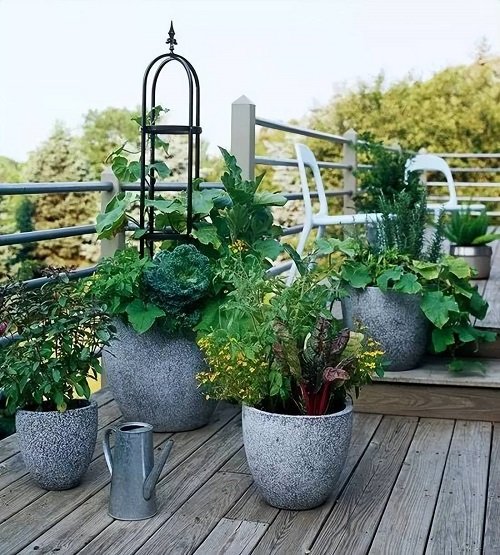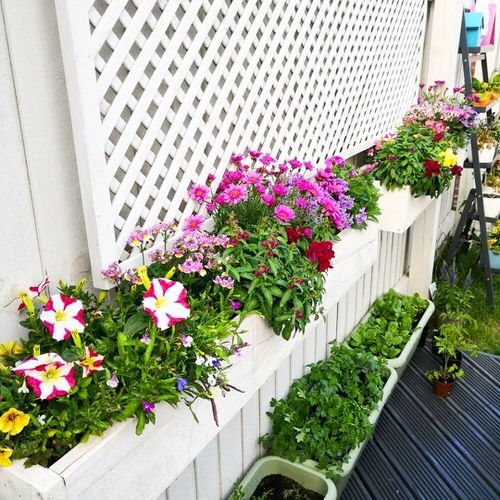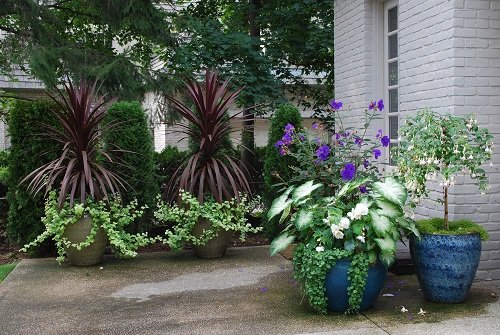Don’t know the first thing about Designing a Container Garden? Follow these Container Garden Design Tips to create amazing container gardens!
Here are Container Garden Design Tips so you can organize your lovely foliage and create a beautiful one for your home. Designing a Container Garden is quick and easy with our expert tips.
Container Garden Design Tips
1. Go with Shrubs or Trees
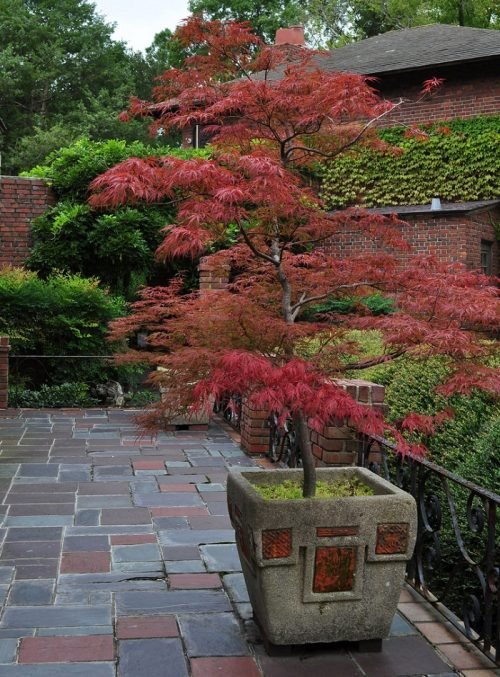
When designing container garden ideas, consider adding a lovely shrub or tree to a big and unique container. Put it in a central spot to make it stand out as the main attraction. You can also plant a shorter plant around its base to make it more charming or let it be by itself for a striking look.
Here are some amazing shrubs and trees perfect for a container garden.
- Japanese Maple (Acer palmatum): Delicate foliage and vibrant colors make it a captivating choice.
- Dwarf Conifers (Various species): Evergreen, compact, and available in various shapes and hues.
- Ornamental Grasses (Various species): Add texture and movement with their graceful appearance.
- Rose Bushes (Rosa): Elegant blooms and a variety of colors for a classic touch.
- Hydrangea (Hydrangea): Big, showy blooms that bring a splash of color.
- Boxwood (Buxus): Dense foliage provides a structured, timeless look.
- Dwarf Weeping Willow (Salix): Graceful, trailing branches for a unique touch.
- Citrus Trees (Citrus): Fragrant blooms and fruit add both beauty and functionality.
2. Choose the Best Location
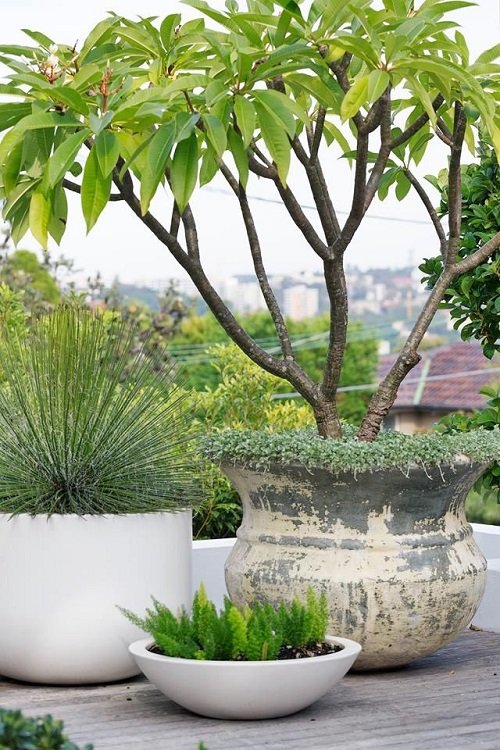
Selecting the optimal spot for your focal point container is crucial in creating a captivating container garden design. Placing it strategically can draw attention and elevate the overall aesthetic of your container garden.
Don’t know how to arrange garden pots? Here are some tips for placing your container garden to create a beautiful focal point.
- Choose a Central Location: Pick a spot in your garden where the container will catch the eye easily. This could be near an entrance, on a patio, or in the middle of a garden bed.
- Height and Elevation: If possible, elevate your container slightly to add dimension. Placing it on a pedestal or stand can make it more noticeable.
- Balance with Surroundings: Ensure the size of the container complements the surrounding plants and structures. It shouldn’t look too small or too overpowering.
- Play with Lighting: If you have outdoor lighting, position the container where it gets illuminated at night. This can create a captivating visual effect after dark.
Remember, the focal point container is like the star of your garden show – make it shine!
3. Adding Depth with Height
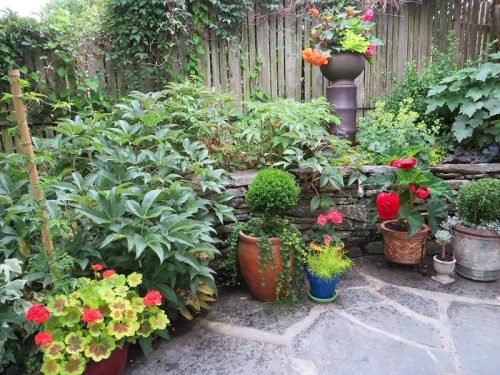
Incorporating varying heights within your container garden is among the top container garden design tips. Utilize plant stands to raise some containers off the ground or repurpose pots and inverted buckets as makeshift bases for others.
This technique not only showcases plants at different eye levels but also introduces engaging multi-dimensional container garden ideas.
Don’t limit yourself to just one or two containers – spread the beauty by scattering multiple pots throughout your garden space. This will add to the visual splendor and enable you to experiment with diverse plant combinations and textures.
If you have no idea how to arrange garden pots, follow these tips. For larger and heavier pots, opt to place them directly on the ground, anchoring them with a sense of stability that complements the container garden plans.
4. Create Harmonious Plant Groups
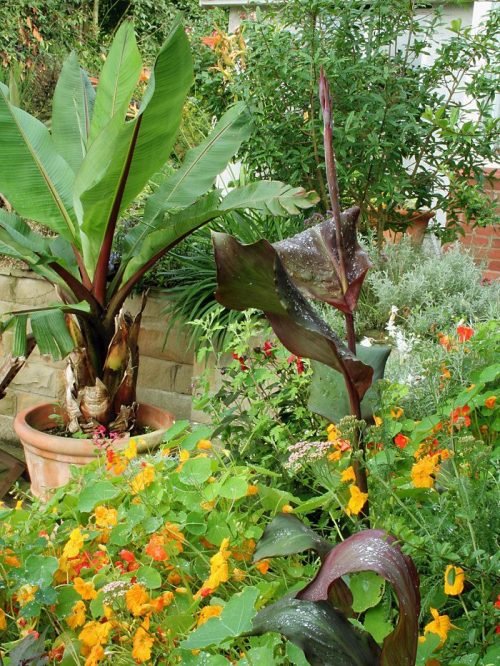
Grouping plants based on their height is a smart way to craft a garden that feels naturally inviting. Using these container garden design tips thoughtfully, you can achieve a balanced and pleasing visual arrangement.
Arrange taller plants and trees towards the back of the container and position shorter, low-growing plants in the front. This arrangement replicates the beauty of a natural garden scene, adding depth and dimension to your container garden plans.
Plant Ideas for a Container Garden
- Tall Thrillers with Groundcover: Pair tall plants like ornamental grasses or upright shrubs with a low-spreading groundcover like creeping thyme or sedum.
- Vertical and Cascading Contrast: Combine tall, vertical plants such as foxgloves or salvia with trailing, cascading plants like ivy or million bells.
- Focal Point with Surrounding Blooms: Place a focal point tree or shrub in the center and surround it with smaller flowering plants like pansies or petunias.
- Layered Heights with Herb Garden: Arrange taller herbs like rosemary or lavender at the back, medium-height herbs like basil or parsley in the middle, and low-growing herbs like thyme or oregano at the front. These are the best choices if you’re looking for a container garden for herbs.
- Grasses and Perennials: Mix ornamental grasses with perennials of varying heights, creating a dynamic and textured look.
5. Opt for Pedestrals and Massive Planters
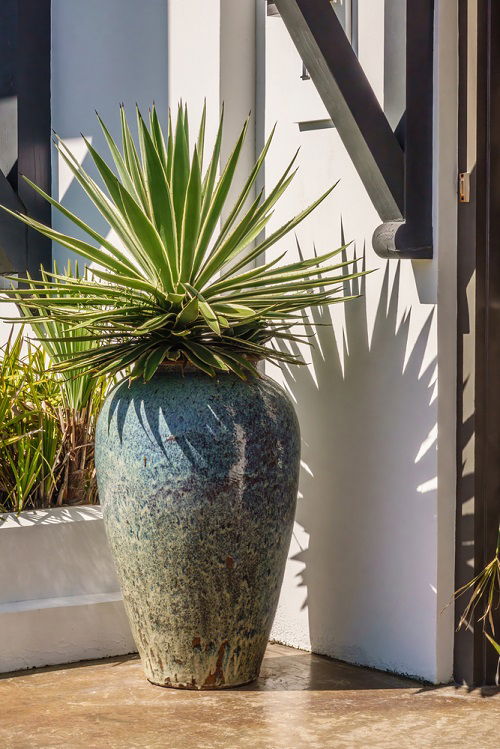
Elevate the appeal of your container garden by strategically using pedestal pots or stands. This clever technique directs attention to the captivating foliage and delicate blooms that could otherwise go unnoticed.
Place plants with intricate leaves or charming flowers on these pedestals to bring them to eye level, ensuring that their beauty becomes a focal point in your garden.
Through the thoughtful placement of pedestal pots or stands using one of the best container garden design tips, you can highlight the intricate details of your plants, transforming overlooked features into the star attractions of your container garden.
6. Conceal the Unattractive Elements
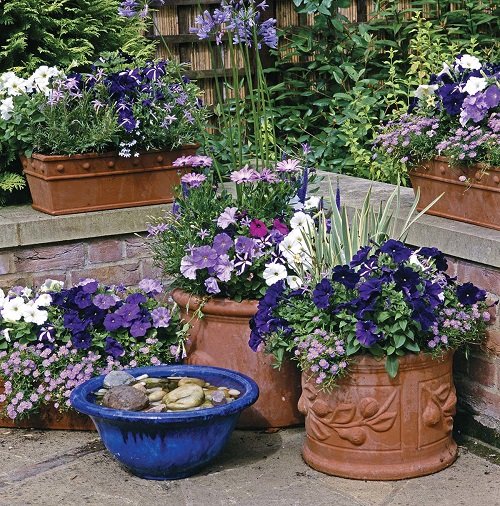
Worried about how to arrange garden pots? Transform the look of your container garden by using a simple yet effective technique – positioning containers strategically to hide unsightly pots, stands, bland wall, bench, and plant stands.
By placing attractive containers in front of these less appealing elements, you can instantly elevate the visual appeal of your garden.
Container Garden Design Tip: By placing containers in front of unattractive elements, the focus shifts to the beautiful plants, making them appear more substantial than they actually are. Employ this tactic to your advantage to add depth and scale to your container garden.
7. Group Plants by Watering Needs
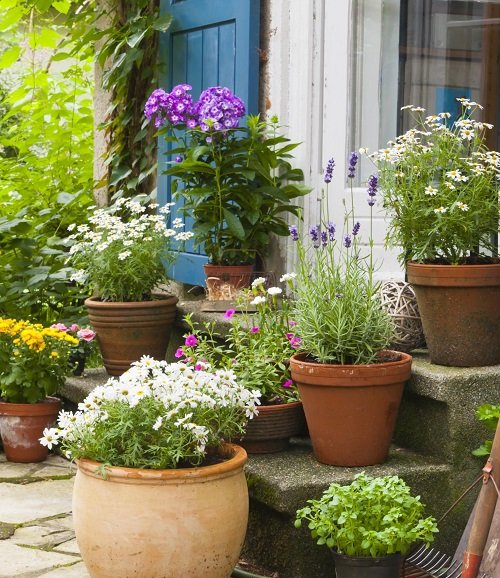
Make watering your container garden a breeze by grouping plants that share similar water requirements. By following these container garden design tips, you will streamline your maintenance routine and ensure that each plant receives the right amount of hydration, promoting its health and vitality.
By arranging your plants based on their water needs, you’re setting yourself up for a more manageable and successful container water garden. Here are some combos to get you started.
- Drought-Tolerant Trio: Combine succulents like echeverias, sedums, and hens and chicks in a succulent container garden for an easy-to-care-for arrangement.
- Moisture-Loving Mix: Pair ferns, impatiens, and coleus in a container placed in a shady spot that stays consistently moist.
- Cacti and Friends: Create a desert-themed container with cacti, agave, and aloe vera for a low-water oasis.
- Herb Harmony: Group herbs like rosemary, thyme, and sage that share a preference for well-draining soil and moderate watering.
- Grasses and Gravel: Mix ornamental grasses with gravel-loving plants like lavender or verbena to create an attractive, water-efficient display.
8. Get More by Going Vertical
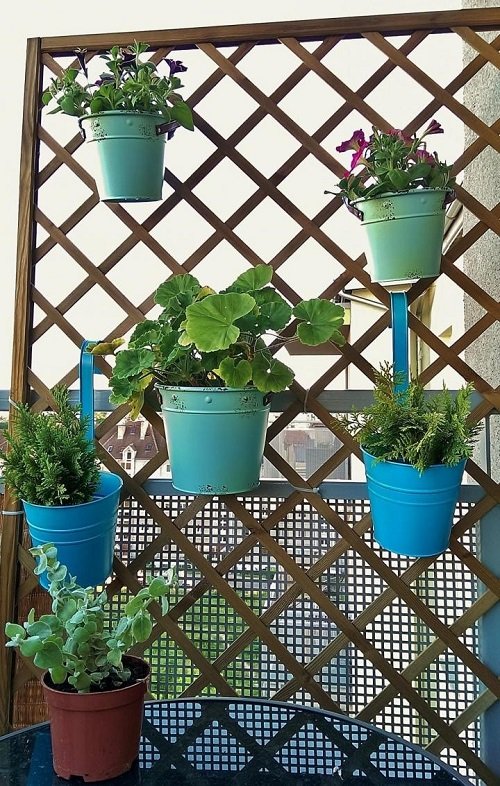
Extend your container garden beyond the ground level by embracing vertical space. Hanging baskets are a brilliant way to make the most of unused overhead areas, whether it’s a balcony, porch, or even a garden fence.



